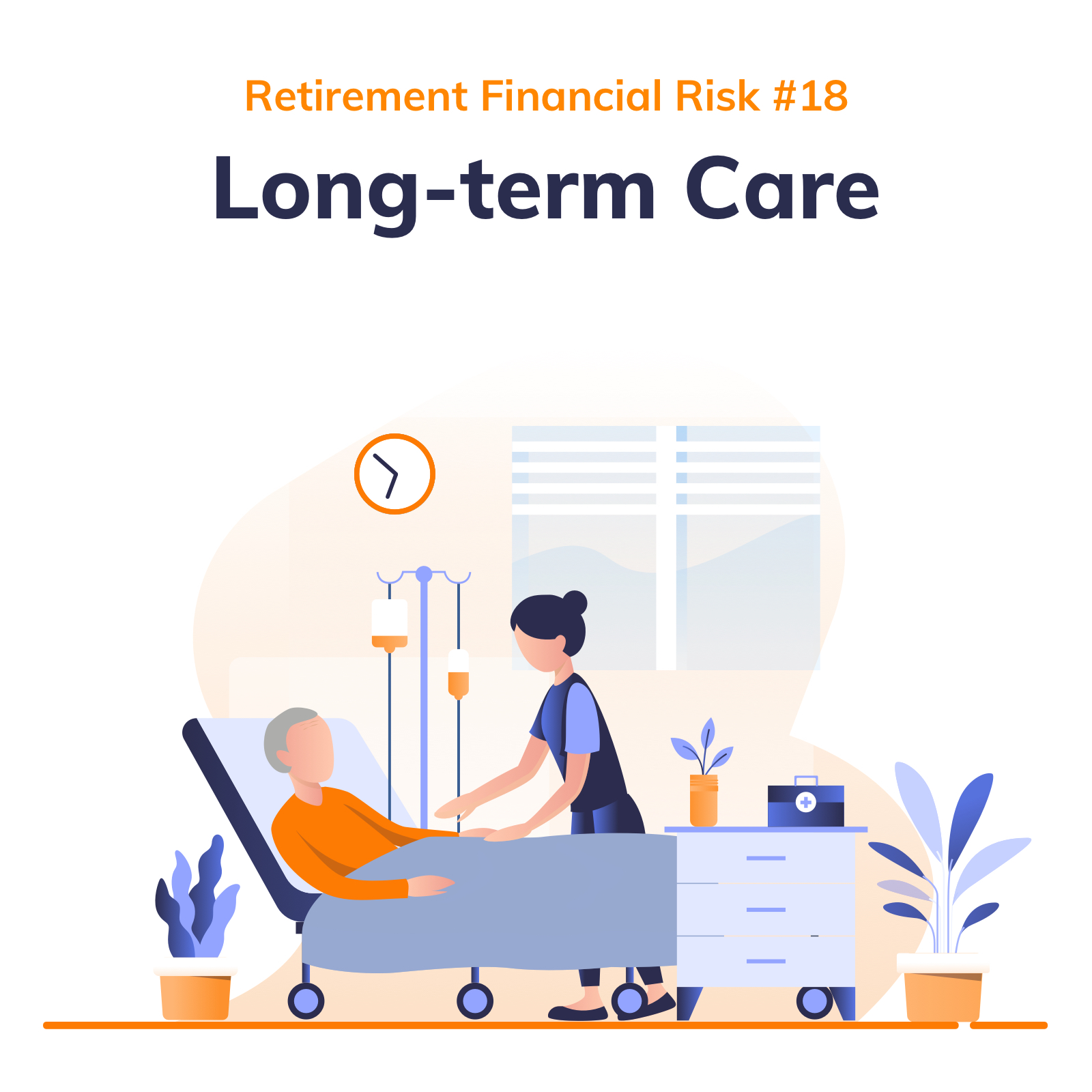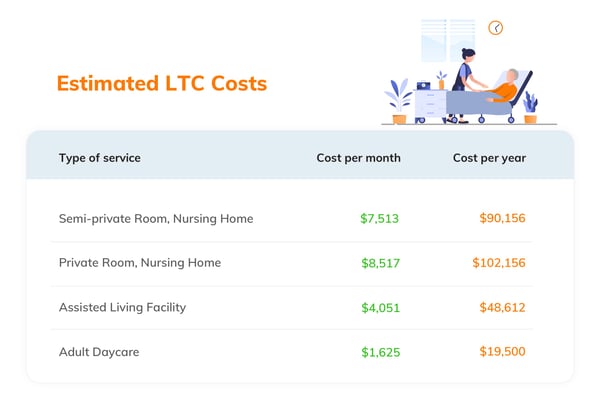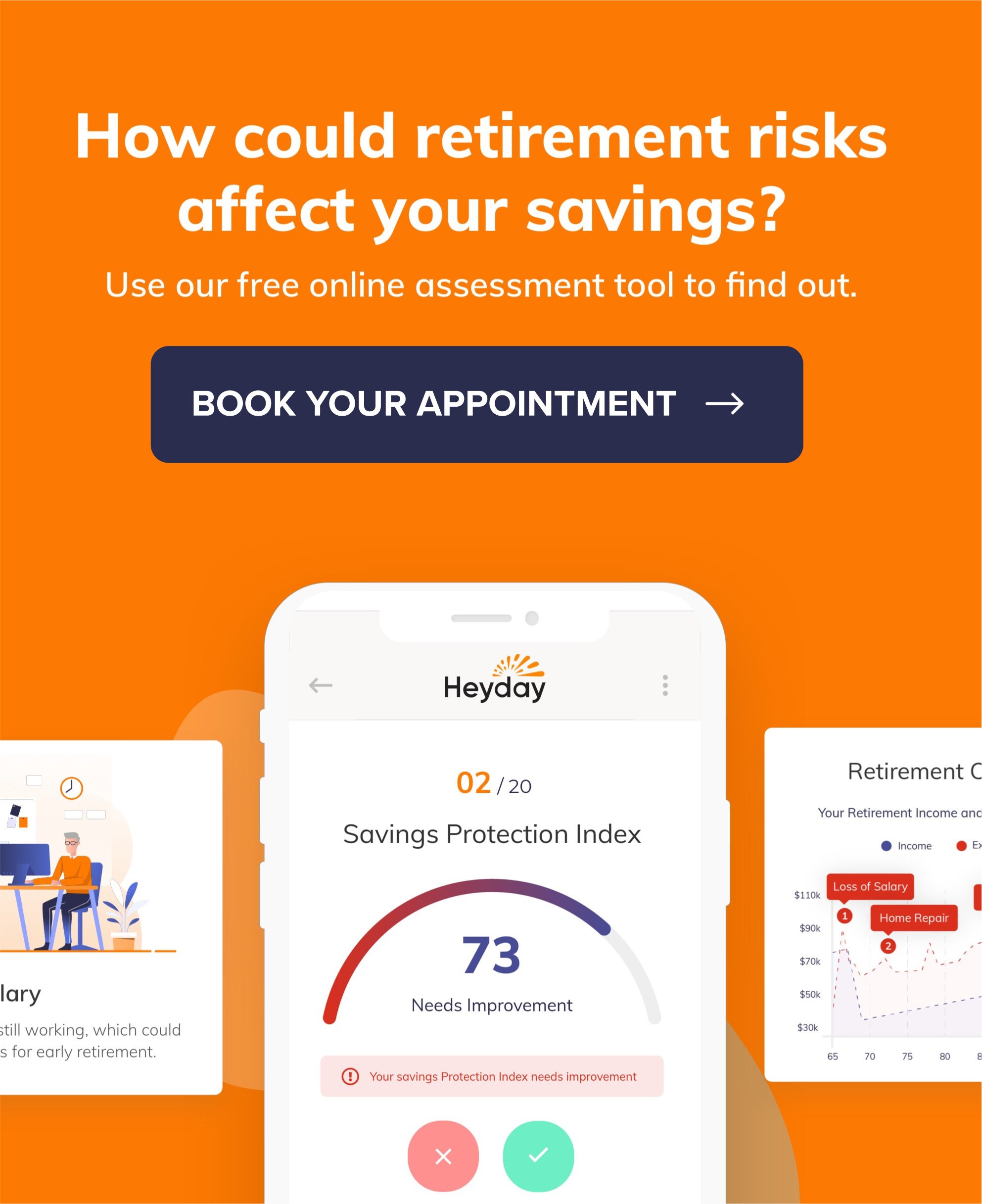Retirement Risk #18: Long-Term Care — One Risk Many Retirees Worry About
Addressing the Elephant in the Room
Long-term care often comes with a hefty price tag — one retirees may struggle to plan and pay for.
“Long-term care prices have, historically, steadily increased. We should assume this trend will continue. Current national averages are approximately $7,500 per month.”
— Eric Stratton, Heyday founder
Planning for retirement can be especially difficult because of two key factors, both outside our control:
- We don’t know how long we’ll live, so we don’t know how long we may need our money to last .
- We don’t know if we’ll need long-term care (LTC) at some point, which could cost several thousands of dollars on top of other retirement expenses.
According to the U.S. Department of Health & Human Services, 7 out of 10 people will need long-term care in their lifetime. And when the median cost for a semi-private room in a nursing home is over $90,000 per year, having a plan is important.
This article is meant to provide an overview of potential costs retirees can expect, and is not intended to offer or endorse any specific product.
The amount of out-of-home long-term assistance needed can vary:
Nursing home - where retirees who need 24/7 access to medical professionals for chronic conditions or deteriorating health issues reside.
Assisted living facility - designed for retirees who have some level of independence, but may need minor nursing assistance or help with some daily activities.
Adult daycare - a facility where retirees can be dropped off during the day to provide temporary supervision for those who do not need care around the clock.
Estimated LTC Costs
Genworth’s 2019 Cost of Care Survey revealed the following national median costs (which may vary depending on where you live):
Planning for Future LTC Needs
With the cost of LTC looming over retirees’ heads, it can make planning the rest of retirement more complicated. Retirees typically address LTC in one of the following ways:
Retire, but spend as little as possible - in an attempt to be financially prepared should they need to enter an assisted living facility or nursing home, some retirees will vastly underspend and underlive retirement. This “just in case” mentality can extend the life of retirees’ nest eggs, but it may also rob them of enjoying their early retirement years, often delaying or canceling those “someday” plans and big trips .
Delay retirement until we have “$XXX,000” saved for long-term care - upon reading the statistics about the estimated costs of LTC, some may strive to keep working until they have the estimated totals in reserves. Unfortunately, working longer to save up and have an extra few hundred thousand can be a difficult task that can put off the fun activities they’ve worked for and looked forward to all those years.
Purchase long-term care insurance - LTC premiums could cost thousands of dollars each year, which may take a large portion of their monthly income. Of course, the extra expense could take away money that would otherwise be used for retirement goals, including travel and hobbies.
Consider this example:
Lee and Dawn are 64 and planning to retire within the next six months. Because Dawn has been managing her mother’s finances while she’s been in a nursing home, Dawn is aware of the potential costs she and Lee may encounter later in life.
However, the couple doesn’t want this potential, yet significant expense to prevent them from enjoying the retirement they’ve dreamt about for decades.
What might they do?
- Purchase a long-term care insurance policy? They may not even qualify due to pre-existing conditions.
- Work a few more years? That may not be an option due to declining health.
- Retire but eliminate all discretionary spending? What’s the point of retiring if they can’t do the fun things they’ve been looking forward to?
As you can see, planning for long-term care can be complicated. And it’s only one of many risks retirees may face on the road ahead. Free online tools can help them identify potential risks in their plans so they can help address them now.
Heyday’s Custom Retirement Review is a quick and easy way to see how exposed your nest egg may be in retirement. Simply answer a few online questions to help secure your retirement.

Written by Cindy Collins
Forbes Contributor & Retirement Financial Professional
Cindy Collins is a Heyday Retirement contributor with over 30 years of experience in personal financial services.

About Heyday
Heyday is a premier source for comprehensive tools and informative content designed to help retirees build a secure retirement income plan.
Subscribe
Stay in the know on a wide range of retirement topics.









